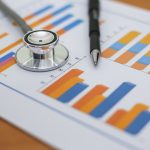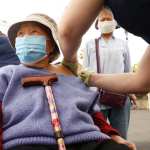Months into the COVID-19 pandemic, details about the virus’ sex and gender implications have begun to emerge: More men than women are dying from the coronavirus. But other details — such as why, or what social or biological mechanisms are involved, or what that means for treatment or public health — remain unknown.
One problem, experts say, is an international blind spot to sex and gender. Global disease surveillance systems have done a poor job of monitoring how the virus affects people of different gender identities or sexes.
A new database is trying to address that. The project, compiled by researchers across the globe and spearheaded by gender equity group Global Health 5050, is the first major effort to capture and quantify COVID’s gendered impact.
The data highlights blind spots in how countries track the virus. And the United States is particularly far behind, said Sarah Hawkes, an epidemiologist and co-director of Global Health 5050.
Those information gaps matter, she added. Understanding COVID-19’s sex and gender disparities can help researchers develop effective medical responses to the virus, or craft effective public health outreach campaigns.
Hawkes spoke with The 19th about the shortcomings in global COVID data, what this database shows, and how its findings could help fight gender inequities in coronavirus.
The conversation has been edited for length and clarity.
The 19th: What prompted you to do this work?
Hawkes: At the start of the epidemic, we started looking for sex disaggregation data on COVID. And we didn’t see it. We discovered that, although global [disease] monitoring systems recommend sex disaggregation, they can’t mandate it. They also don’t have a mandate to report by sex disaggregation. So we thought, “Well, somebody should do it, so we may as well.”
What were the challenges in getting that data together?
One was our own resource capacity. It’s very time-consuming to be able to go through websites to find the data.
The second big challenge is the lack of access to sex-disaggregated data. We’re pretty sure that most of the countries that are collecting data on COVID actually have, somewhere in their system, a box ticked to say “this is a data point on a man or a woman.” But when they put the data out publicly, they put it out collapsed together. So the biggest challenge is, how do you find the sex-disaggregated data?
And it’s actually very difficult to find the data itself. Not just sex-disaggregated, but the actual [COVID] data, because frequently, governments are not putting it out. I’m trained originally as an epidemiologist, so I would expect if I wanted to know national data on XYZ disease, to be able to go to a ministry of health website for most countries and look up the information.
But because it’s a pandemic, what we found is that a lot of the data is being put out in really — from an academic perspective — quite unusual channels. We find some of this data on Twitter. On Facebook. On even YouTube. Which is great in some ways, because it means you’ve got a really wide audience, but going back to our first challenge, which is our own human resource capacity, then it’s really hard to have to go to so many different channels.
Are you having similar challenges finding data for gender identity? And why aren’t governments publishing sex and gender data? Is it a blind spot?
What we are asking for is data that is disaggregated at a mininum by sex. And we can then, as the research community, think about the gendered reasons why we might see difference.
Let’s say we see 100 COVID deaths in men and 85 in women. We would never, or very rarely, think that’s all down to gender. We would put forward the notion that some of that is possibly due to absolute biological differences between people with XX chromosomes and people with XY chromosomes. We know from some of the evidence on COVID that there are immunological differences, for example, between men and women that might explain the outcome differences we’re capturing.
It would be great if surveillance systems captured gender identity as well as sex. But they don’t. If you go and have a COVID test, they don’t say, “What’s your biological sex and what’s your gender identity.” It’s simply a case the forms don’t say that.
As feminists, and as people doing research, we’re really keen to recongize that sex and gender both play a very important role in the outcomes. Pragmatically, we also recognize that current data capture systems generally only capture self-indentified sex. The systems aren’t nuanced enough.
One of the things we’re trying to say is, at a minimum, give us the sex disaggregation. If you can now please talk about gender identity, we can investigate even more carefully why you see differences.
But you’ve got huge numbers of countries not even giving us sex disaggregation. We haven’t got any data on nonbinary populations. It’s not that we don’t want to report it; the data aren’t there.
How did the United States fare on collecting gender or sex information and making it public?
They were late to the party. Which I think characterizes several characteristics of the U.S.’ response, does it not? As an epidemiologist, I was really surprised.
I’ve spent over 30 years working predominantly in Asia and the Middle East. The [Centers for Disease Control and Prevention] is second to none when it comes to global strengthening for epidemiological surveillance. I could see there were countries where capacity is generally quite low in the health system that were reporting sex-disaggregated data well in advance of the U.S. The same for the U.K. The U.K. and the U.S. both have very strong system capacity to think about sex, gender, racial identity, class identity and present data in that way. But it took them a number of weeks to do so.
In your database, you weren’t able to provide gender or sex-based data for testing in the United States at all. Is that not there?
I’m sure that somewhere in the testing system, someone knows whether they’ve tested men or women. But they’re just not giving that data out publicly.
That’s the same for all of it. Countries that don’t present death data disaggregated — they know if it’s men or women dying. They know. They just don’t have the mindset to think it might be important.
Why is this data important? What are we starting to see in the case of COVID-19 with regard to sex and gender that we wouldn’t have?
We’ve got really good data to show that there is a very clear gender impact of the secondary outcomes — social impact, economic impact. But the data we’re providing is the best way of beginning to think about what the actual impact of the infection itself is, and whether that has a sex and gender component. It’s only by measuring the data that you actually see a difference that you can begin to investigate.
Once you see a difference, you can begin to really investigate: Is this down to biology? Is there something about women’s immune systems?
We see lots of countries don’t provide sex-disaggregated data. There’s no excuse for it. But when we do have the data, what we see is that more women get tested. That allows you to think, “Well, why haven’t we got public health messaging that is gender responsive to men’s lack of participation?” We need to change the way we talk about the way men get screening.
When you look at the rest of the data, you see a pretty even split between men and women in cases, but men are more likely to be hospitalized, and they’re more likely to die. If I was a lab researcher, I’d say, “Is that because there’s something about women’s immune systems that means they survive better? And what can I identify as the biological mechanisms, that can then help me think about treatments for everybody?” People could use the data to think about hypotheses.
Public health researchers should think about the big gaps between men and women. Do you see more cases of deaths in men because they have more heart disease and lung disease? Do we see that gap because women don’t have access to services? Are we seeing more men in hospitals and in the death registration system because women can’t access services, and their deaths don’t get counted? What we hope is our data will mean people can start to investigate why those differences are there.
What do you hope this work leads toward?
We need a stronger global surveillance system that can actually mandate disaggregated reporting. Right now, we’re doing it and, to be really honest, we’ve all got day jobs. We think, actually, there are agencies that should have the mandate to do this.
Then there’s nationally, and in the case of countries like the U.S. or India, where you’ve got federated systems, subnational. There should be an absolute requirement that, at a minimum, you have sex and age disaggregated. If you could add on other intersectional issues, that would be fantastic. Globally, we want sex and age; nationally, we want more. This should be a mandated part of the surveillance system.
The only purpose of collecting accountability data leads to the third, most important point. The data’s not there just because we like producing pretty graphs; the data is there for people to act on it. Whether they’re going to use it to investigate differences, or use it to ensure that policies and programs are more equitable and more effective.






